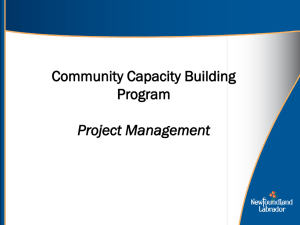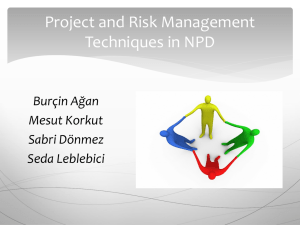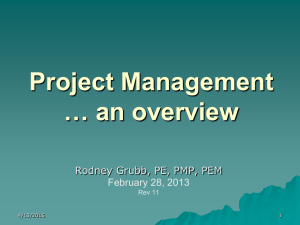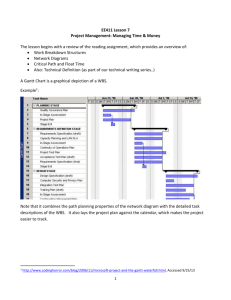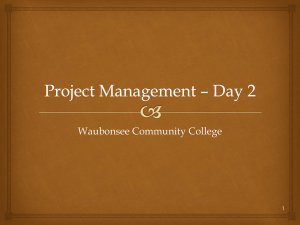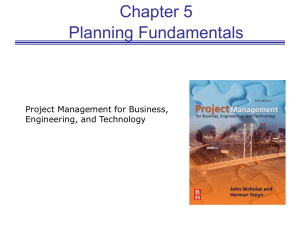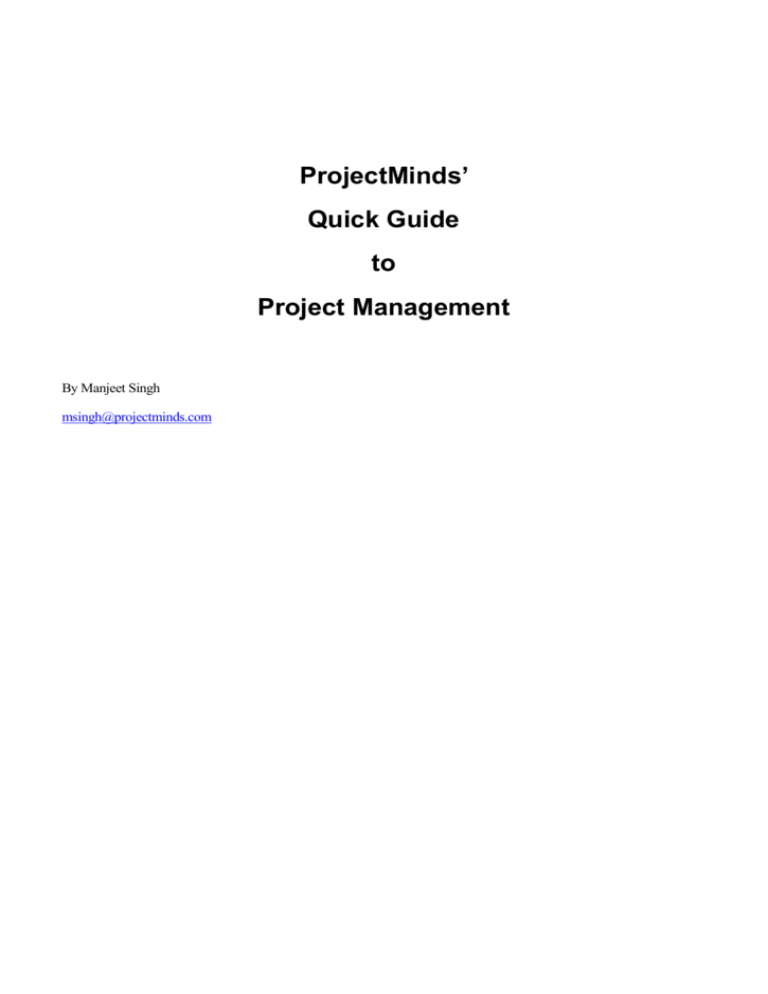
ProjectMinds’
Quick Guide
to
Project Management
By Manjeet Singh
msingh@projectminds.com
A
DI FFERENT
KI ND
OF
COPYRI GHT
No rights reserved.
All the parts of this book can be reproduced, stored in a retrieval system, or transmitted in any form or by any means,
electronic, mechanical, photocopying, recording, scanning, or otherwise. You do not need the prior written permission
or authorization of the author.
DI SCLAI MER
The author of this book specifically disclaims all responsibility for any liability, loss or risk to any person or entity
arising from the use of information contained in this book or its Word file.
V1.3
1
Table of Contents
Introduction ............................... 1
About the author ............................. 1
Chapter 1: Defining what a
project is .................................... 2
Project success criteria .................... 2
Why are organizations using project
management? .................................. 3
Chapter 2: The project lifecycle 4
Initiating .......................................... 4
Planning .......................................... 4
Executing: ....................................... 4
Controlling and monitoring ............ 5
Closing: ........................................... 5
Chapter 3: Project initiating
process ...................................... 6
The SOW (Statement of Work) ...... 6
Chapter 4: Project planning
process ...................................... 8
The WBS ........................................ 8
Network diagrams ......................... 10
The Gantt chart ............................. 10
Getting and estimating resource
requirements ................................. 11
People first .................................... 11
Nonperson resources ..................... 12
Creating your project plan ............ 13
Chapter 5: Project executing
process .....................................14
Managing & leading ..................... 14
Ensuring your team works well .... 15
Communicating ............................ 15
Chapter 6: Project controlling
and monitoring .........................16
Review meetings........................... 16
Resolving conflicts ....................... 17
Resolving project problems .......... 18
Controlling change ....................... 19
Chapter 7: Project closing
process .....................................20
The project evaluation report ........ 20
P R O J E C T M I N D S ’
Q U I C K
G U I D E
T O
P R O J E C T
M A N A G E M E N T
Introduction
The purpose of this book is to share what I have learned about project management over the years.
Please feel free to use this book for your professional and personal use. All I ask is that you insert a
reference to me or the www.projectminds.com website. Also, please send me an email to let me
know how you are using this book. My email is msingh@projectminds.com.
This book will be updated on a regular basis. If you would like to contribute, please contact me on
the email above.
I wish you lots of success using this book!
About the author
Manjeet Singh has 17 years of experience acquired in a wide variety of industries with a focus on
project management in the High-Tech field. Manjeet has an Executive MBA from the HEC
Management School. He also is the author of www.projectminds.com, a website dedicated to project
management resources.
To contact him, please send an email to msingh@projectminds.com.
www.projectminds.com
1/23
P R O J E C T M I N D S ’
Q U I C K
G U I D E
T O
P R O J E C T
M A N A G E M E N T
Chapter 1: Defining what a project is
You have been handed a project by your organization. Your job now is to effectively manage the
project to completion. For your project to be successful, you need to understand what exactly
constitutes a project, and which criteria are used to determine whether a project is successful or not.
A project has the following characteristics:
A start and end date: projects have dates that specify when project activities start and when
they end.
Resources: time, money, people and equipment, used by the project. For example, to
produce a brochure you will need a team (designers, copywriters, creative directors, etc.),
equipment (computers, printers, paper, delivery trucks, etc.) and money to pay the
salaries/fees, buy equipment, and so on.
An outcome: a project has a specific outcome such as new highway, a satellite, a new office
building, a new piece of software, and so on.
Project success criteria
Whatever its size, a project’s success is based on three main criteria as shown by the following
triangle:
Outcome
Time
Budget
Your project will therefore be deemed successful if it:
Delivers the outcome with an agreed upon quality.
Does not overrun its end date.
Remains within budget (cost of resources).
Note however, that outcome, time and budget are interrelated, and during a project you may need to
do trade-offs between them. For example, if you want to get something done more quickly, you may
have to pump in more money into your project for additional resources.
www.projectminds.com
2/23
P R O J E C T M I N D S ’
Q U I C K
G U I D E
T O
P R O J E C T
M A N A G E M E N T
Why are organizations using project management?
Today’s highly competitive business environment forces organizations to make high-quality
products at a lower cost and in a shorter duration. Organizations therefore are increasingly using
project management because it allows you to plan and organize resources to achieve a specified
outcome within a given timeframe. The techniques of project management also help you manage and
anticipate risks in a structured manner. Surveys of organizations using project management have
shown that project management allows for better utilization of resources, shorter development times,
reduced costs, interdepartmental cooperation that builds synergies across the organization, and a
better focus on results and quality.
www.projectminds.com
3/23
P R O J E C T M I N D S ’
Q U I C K
G U I D E
T O
P R O J E C T
M A N A G E M E N T
Chapter 2: The project lifecycle
A project lifecycle typically has the following processes as defined by the Project Management
Institute (PMI):
This book assumes that your project has already been selected, and that a Project Charter has been
produced. A Project Charter is generally a document that provides a short description of the project
and designates the Project Manager. Sometimes a commercial contract also leads to the initiation of
project especially in firms specialized in providing professional/consulting services.
Initiating
During the initiating process, you will refine the project goals, review the expectations of all
stakeholders, and determine assumptions and risks in the project. You will also start project team
selection -- if the project team has been imposed, then you need to familiarize yourself with their skill
set and understand their roles in the project. At the end of this phase you will produce a Statement of
Work (SOW), which is a document that provides a description of the services or products that need
to be produced by the project.
Planning
During the planning process, you will detail the project in terms of its outcome, team members’ roles
and responsibilities, schedules, resources, scope and costs. At the end of this phase, you will produce
a project management plan, which is a document that details how your project will be executed,
monitored and controlled, and closed. Such a document also contains a refined project scope, and is
used as the project baseline.
Executing:
During the executing process, you apply your project management plan. In other words you direct
your team so that it performs the work to produce the deliverables as detailed in the plan. The
executing process also involves implementing approved changes and corrective actions.
www.projectminds.com
4/23
P R O J E C T M I N D S ’
Q U I C K
G U I D E
T O
P R O J E C T
M A N A G E M E N T
Controlling and monitoring
During the controlling and monitoring process, you supervise project activities to ensure that they do
not deviate from the initial plan and scope. When this happens, you will use a change control
procedure to approve and reject change requests, and update the project plan/scope accordingly. The
controlling and monitoring phase also involves getting approval and signoff for project deliverables.
Closing:
During the closing process, you formally accept the deliverables and shut down the project or its
phases. You will also review the project and its results with your team and other stakeholders of the
project. At the end of the project you will produce a formal project closure document, and a project
evaluation report.
www.projectminds.com
5/23
P R O J E C T M I N D S ’
Q U I C K
G U I D E
T O
P R O J E C T
M A N A G E M E N T
Chapter 3: Project initiating process
Your project has been selected, and you have been appointed as the Project Manager. You should
now use the Project Charter or commercial contract, to get the wheels spinning in motion. At the
minimum your Project Charter should:
Designate you as the Project Manager with the authority to use resources to bring the project
to completion -- this is formally done by the project sponsor/main stakeholders.
Provide a short description of the result, outcome, product or services to be produced by the
project.
Refer to the commercial contract as the basis for initiating the project (if there is such a
formal contract).
After having reviewed the Project Charter, do the following:
Ask the Project Sponsor and main stakeholders to share with you any emails, letters,
memos, project feasibility, meeting minutes, requirements or other documents related to the
project.
If a similar kind of project has already been completed, get your hands on all the
documentation that was produced for that particular project. Set up a meeting with the
project manager of that project to ask for advice.
The SOW (Statement of Work)
The next thing that you want to do is start working on your Statement of Work (SOW), a crucial
document that you will constantly update and use as a baseline for your project. Depending on the
size and complexity of the project, and your knowledge about the subject matter, you will need to
organize meetings with the stakeholders in order to refine the SOW and get it approved. A wellthought out SOW generally contains the following sections:
An Executive Summary
Provides a short overview on the purpose of the project, its background, its scope and sometimes a
high-level project plan.
Objectives
Describes the objectives of the project. The majority of project management literature recommends
SMART objectives that are:
Specific: your objectives must be clear so that if someone reads them, he or she can interpret
them without ambiguity.
Measurable: you should be able to measure whether you are meeting the objectives or not.
Achievable: do not try to attempt more than you can.
Realistic: do you have the resources to achieve your objective?
Time-specific: specify when an objective will be attained (date).
www.projectminds.com
6/23
P R O J E C T M I N D S ’
Q U I C K
G U I D E
T O
P R O J E C T
M A N A G E M E N T
Scope
Details the scope that you identified in the Executive Summary of the SOW. In this section, describe
the work that will be done. Also, if required, explain what will not be done – this is especially useful
to avoid confusion. Note that the Scope section is one of the most important sections of the SOW.
Therefore, be very specific when writing it.
Deliverables
A list of the deliverables to be produced by the project. Describe each deliverable in an unambiguous
manner that is understood by the team member responsible for it.
Project assumptions and risks
There might be a number of unknown issues while you are planning your project. For such issues
you need to make assumptions, which constitute a risk. Typical project risks are associated with
timeframes, and availability of resources (funding, project team members, supplies, etc). Detail the
identified risks in your project and include contingency plans for each risk
Stakeholders
A list of all the stakeholders identified so far in the project. You may also want to detail roles of each
stakeholder in this section.
TIP: Get your SOW approved by the stakeholders. Once this is done, you will be ready
to start planning.
www.projectminds.com
7/23
P R O J E C T M I N D S ’
Q U I C K
G U I D E
T O
P R O J E C T
M A N A G E M E N T
Chapter 4: Project planning process
You have now gained more knowledge about your project. Working on the SOW helped you refine a
number of aspects of your project. You should now start project planning, which involves:
Detailing the activities that make up your project – you will use the Work Breakdown
Structure (WBS) to accomplish this.
Creating a network diagram to determine the dependencies among the activities.
Identifying the resources (people, equipment, facilities, etc.) you need for the project.
Establishing a schedule for your project and refining its scope.
Putting all of the information into a project management plan that will become the baseline
document for your project. Remember to get the plan approved by the main stakeholders of
the project.
The WBS
To begin the project planning process, start working on the WBS, which is an effective tool that
helps you list all the tasks involved in your project. The WBS allows you to group all the tasks under
main activities ensuring that you have a clear overview of what you need to execute during the
project.
A good way of developing your project’s WBS is by using the major milestones/deliverables that
you identified in your SOW. Once the milestones have been identified, brainstorm with your project
team to detail the tasks that you must accomplish in order to achieve the milestones. If you and your
team are familiar with the project, a milestone approach will work very well. If this is not the case,
then consider including in your workshops someone who may not be on your project team but has
previously completed a similar project.
Here is a simplified WBS for the design of a website:
www.projectminds.com
8/23
P R O J E C T M I N D S ’
Q U I C K
G U I D E
T O
P R O J E C T
M A N A G E M E N T
For more complex projects with a higher level of detail, you can choose the following format for
your WBS:
1.0 Website Project
2.0 Design
2.1 Select layout
2.2 Design graphics
2.3 Approve design
3.0 Content
3.1 Select contributors
3.2 Write contents
3.3 Approve contents
3.4 Insert content into pages
4.0 Development
4.1 Setup website on test environment
4.2 Perform tests
4.3 Approve tests
4.4 Setup website on live environment
TIP: Careful with the level of detail in your WBS – 3 levels is good; 5 the limit, and 7
becomes unwieldy.
www.projectminds.com
9/23
P R O J E C T M I N D S ’
Q U I C K
G U I D E
T O
P R O J E C T
M A N A G E M E N T
Network diagrams
The WBS allowed you to identify groups of activities that you need to accomplish in your project.
However, the WBS does not show the dependencies or sequence between these activities. A network
diagram will allow you to illustrate this. Once your network diagram is ready, only then can you
realistically start determining your project’s schedule.
Here is a simplified network diagram for the “Build Shed” project:
The above network diagram shows the relationships (arrows) between the main activities (rectangles)
that are required to build a shed. You can flesh out the following information from the above
diagram:
The Cut wood activity can be carried out in parallel to the Build shed base & Supervise
cement hardening ones – this of course assumes that you have different teams working on
each set of activities.
The dark arrows show what is known as the Critical Path (Buy materials->Build shed base>Supervise cement hardening->Assemble shed). The Critical Path is the sequence of
activities that takes up the most time to complete your project. Any delay in this sequence of
activities will impact the overall timeframe of your project. Therefore, you should carefully
monitor all activities on this path.
The Gantt chart
A Gantt chart is a very useful project management tool that provides you with an overview of your
schedule (something that the network diagram did not).
Here is the Gantt chart for the build shed project:
www.projectminds.com
10/23
P R O J E C T M I N D S ’
Q U I C K
G U I D E
T O
P R O J E C T
M A N A G E M E N T
A Gantt chart does not show the relationships between the activities of your project. However, a
number of project management software packages allow you to show such relationships on a Gantt
chart providing you with an overview of the schedule, and the critical path of your project.
You have now learned how to flesh out the activities involved in a project, determine the sequence of
the activities, and establish a schedule. You are now ready for the next step – determining the
resources that you need to accomplish your project activities. Note that once you have determined the
resources and their availability, you may need to review your project schedule (Gantt chart).
Getting and estimating resource requirements
Now that you have a better overview of the activities and schedule of your project, you have to
determine the resources that you will need to execute the activities. You will need resources such as
people, material and other supplies. For example, in a website design project you would typically
need graphical designers and programmers, access to rooms to hold your meetings, software,
computers, and so on.
People first
Let’s begin with the most important resource – people. You will need to determine the skills required
for accomplishing the activities of your project. After this phase, you need to match people to those
skills. A good way to do this is to create a skills sheet that matches skills to activities. Also keep
columns for the name of people, their start dates, their cost – this information can sometimes be
obtained at the same time. Here is an example of a sheet that you can use to accomplish this:
WBS Activity
Skills
needed
Name
of
person
Skills level
Deliverable Effort
days
Start
date
End
date
Cost
2.1
Write
marketing
content
Marketing
JJC
Expert
Marketing
content for
website
10
May 7
May 20
9,500
2.2
Write HR
content
HR
AFH
Intermediate
HR content
for website
8
May 10
May 30
7,600
2.3
Edit all
content
Document
editing
KDM
Expert
Edited
content for
website
5
April 4
April 20
4,000
The above table goes beyond simply matching activities and skills – it also contains columns for the
names of the people who will execute an activity, their skills level, the deliverable that they are
expected to produce, the date on which they can start and finish, and their cost. Fill in these columns
as soon as you can. Often the managers of the people that you need will be able to commit the
availability of these people for your project. However, it is recommended that you always crosscheck this information with your project team members, and pay particular attention to the following:
Check up the availability of your project team members by taking into account their
vacations, sick days and the other projects that they are already working on.
Ask the functional managers of your project team members to asses the skill set of their
people, and the effort days that will be required by them to accomplish the activities
www.projectminds.com
11/23
P R O J E C T M I N D S ’
Q U I C K
G U I D E
T O
P R O J E C T
M A N A G E M E N T
assigned to them (always cross-check the effort days with the person who will executing an
activity).
The functional managers should be able to tell you how much their people cost. The more
detail you go into when estimating the costs, the more accurate your cost estimates will be.
So be detailed when it comes to costs as this frequently becomes an issue later on in the
project.
TIP: Establish a level of signing authority for the project’s budget. If you have to get
multiple approvals for spending money, you will waste a lot of time thus impacting
your ability to get your project done on time.
Nonperson resources
You may also need to factor in the availability of nonperson resources such as supplies, equipment
and facilities. To do this, create a nonperson availability sheet similar to the example below:
WBS Activity
Resource needed
Time in
hours
Date (s) needed
4.1
- Computer
80
4 to 29 April
Design brochure
- Color Printer
4.2
Brochure review
meeting
- Meeting room with
computer connected
to projector
3
4 May
4.3
Make copies of
draft brochure
- Color Photocopier
2
5 May
Now that you have an idea of your resource requirements and their availability, go back to your
Gantt chart. You might need to re-adjust it in order to take into account your team members’ or other
nonperson resources’ availability.
www.projectminds.com
12/23
P R O J E C T M I N D S ’
Q U I C K
G U I D E
T O
P R O J E C T
M A N A G E M E N T
Creating your project plan
In this book, the project plan document contains all the information that you have collected until
now. Your project plan can contain the following sections:
1. Project management approval page
9. Project organization
2. Executive summary
10. Work breakdown structure
3. Project charter
11. Network diagram
4. Objectives
12. Gantt chart
5. Project Assumptions and risks
13. Resources
6. Project scope
14. Costs
7. Deliverables
15. Procedures
8. Stakeholders
16. Project directory
Note that some of the information in your project plan was already in the SOW and project charter
and by now you have surely updated it given that you have progressed in your project, and gained
valuable knowledge that you did not have during the initiating process. Also, depending on the
size/complexity of your project you can choose to include or not some of the above sections.
Get the main stakeholders to review your project plan. Be sure to put into place a document
versioning system for your plan as it will be surely updated throughout the project.
TIP: Before you start the project executing process, use the project management
approval page to get sign-off from the main stakeholders.
www.projectminds.com
13/23
P R O J E C T M I N D S ’
Q U I C K
G U I D E
T O
P R O J E C T
M A N A G E M E N T
Chapter 5: Project executing process
Time for action now! You will now hold a formal kick-of meeting to start the execution phase of
your project during which you will direct your team’s activities in order to produce the agreed upon
deliverables as detailed in the project plan. Here is an agenda that you can use for your kick-off
meeting:
1. Introductions
6. Project organization
2. Project objectives
7. Roles & responsibilities of stakeholders
3. Project planning
8. Questions & answers
4. Risks involved and how to avoid them
9. Next steps
5. Stakeholders
After the end of the meeting, write a kick-off meeting report and send it to all the stakeholders. Do
this as soon as possible – best is to send this report the next day or at the latest 48 hours after the
meeting.
TIP: Throughout the project always send out reports after each meeting. All of these
reports along with the project documentation should be put in a centralized location
accessible to the stakeholders.
Managing & leading
The role of the project manager has often been described as an ambiguous one – chances are you will
not have any clear-cut real authority over the people in your project team. There might even be
people on your team who are senior to you or have far more project management experience than
you. That being said, managing project teams composed of people from different departments, levels
of seniority, and cultures is an achievable goal.
A vast body of literature exists on management and leadership styles. It is out of the scope of this
book to go into a detailed discussion of this fascinating topic. However, here are three main types of
project leadership styles:
Directive: you make decisions and set the direction for your team. Such a style works in
crisis but discourages participation.
Participative: you encourage participation in decision making. Such a style helps in team
building but may not be the best when you need to react quickly.
Task-oriented: you focus on achieving the project’s objectives by organizing people and
people activities.
TIP: A good project leader has the ability to know when to use one or a mix of the
above styles. The style that you use should be adapted to the current project situation,
people in your project, your organization, the culture/country, and your project’s
outcome.
www.projectminds.com
14/23
P R O J E C T M I N D S ’
Q U I C K
G U I D E
T O
P R O J E C T
M A N A G E M E N T
Ensuring your team works well
Building a team involves much more than just putting the right people together. For a project team to
gel and work effectively you need to do the following:
Ensure that the roles and responsibilities of all team members are clearly defined.
Encourage people to think as a group and not as individuals.
Communicate and listen. To be a good communicator, you must be a good listener.
Otherwise, your communications may not take into consideration the needs of your team.
Be dependable. Always do what you promised. Nothing saps team moral as much as a
manager who does not abide by his or her promises.
Never miss a chance to praise/reward your team or a team member. Always communicate a
team member’s achievements to his or her functional manager.
Be enthusiastic. Being positive is infectious, and motivates your team.
Empower your team members by giving them sufficient decision-making power so that they
can get their work done. However, ensure that they follow the proper project operation
procedures.
Provide training on teamwork if your team is not working well together.
Communicating
Throughout the project communicate, communicate and communicate. Good communication is a
major key success factor of any project. As a project manager you will surely communicate via
phone, emails, meetings, and so on.
As mentioned earlier, to be a good communicator, you must be a good listener first. So listen intently
to your project team -- your team members will appreciate that you value their opinions and
encourage discussion. Listening also is very useful as it provides you feedback on whether your team
members understand your messages.
Giving your stakeholders access to information is a vital part of any project communications
strategy. Ensure that your project team has access to an information sharing system such as an
intranet or a similar collaborative environment. In large projects, a team member may be designated
to supervise the project information sharing system.
www.projectminds.com
15/23
P R O J E C T M I N D S ’
Q U I C K
G U I D E
T O
P R O J E C T
M A N A G E M E N T
Chapter 6: Project controlling and monitoring
Project control consists of ensuring that your project is progressing according to plan, and taking
action if any deviation from the plan is identified.
Use the project plan to monitor and control your project. During the controlling process, you may
have to update the project plan and other documents such as requirements and functional
specifications.
Review meetings
Hold review meetings at regular intervals to control project progress. Follow these tips to ensure that
your review meetings are effective:
Have an informal discussion with your key team members before the meeting.
Do a detailed project review on your own – carefully review all the tasks that need to be
completed in the next three to six weeks. By doing so you may identify issues that need to
be discussed during the meeting.
Now circulate a meeting agenda to all participants.
If decisions need to be made at the meeting, make sure that the person with the authority to
make the decisions attends the meeting.
Start a meeting by specifying its objectives.
Quickly compare the project’s current status with the original project plan.
Follow the initially established agenda and avoid straying from it.
Ensure that the meetings are not too long and make efficient use of the participants’ time.
Always end by recapitulating the decisions made, and the next steps.
Write a meeting report and circulate it within 24 hours of the meeting. Depending on the
situation, you might want to write a detailed report or just a simple list of decisions that were
made, and actions to be taken.
www.projectminds.com
16/23
P R O J E C T M I N D S ’
Q U I C K
G U I D E
T O
P R O J E C T
M A N A G E M E N T
Resolving conflicts
Conflicts are inevitable when people (especially from different backgrounds) work together on a
project. Conflicts in projects typically fall into the following categories:
Conflict over different objectives and expectations.
Unclear roles and uncertainty about who has the decision-making authority.
Interpersonal conflicts between people.
Here is a method known as the “win-win” approach to conflict resolution:
1. Before you start resolving a conflict, analyze it by asking questions from the
conflicting parties.
2. Once you have sufficient information about the conflict, actively seek common
ground in order to emphasize the agreement side of things – this starts the conflict
resolution process on a positive note.
3. Now ask the conflicting parties to brainstorm possible solutions to the issues at
hand.
4. Once you have identified resolutions, agree upon guidelines on how to implement
these resolutions.
5. Document and then implement the resolutions.
The “win-win” conflict resolution method is generally accepted as being as being a fair one as it
allows the conflicting parties to be heard and involves them in working together to find a solution to
the conflict. However, the “win-win” method does not always work. In this case, you should agree
with the conflicting parties that the conflict is unresolved. You can now adopt one of the following
approaches:
If the conflict is of a technical nature, bring in a technical expert whose opinion the
conflicting parties value, and ask him or her to help resolve the conflict.
If the conflict is not of a technical nature, involve the project sponsor or a senior manager to
help you out. This method however, should only be used when all other methods have failed
– people do not like being forced by supervisors to do something they do not feel
comfortable with.
Also, note that if properly managed, certain conflicts can be actually good for your team as they may
generate new, more effective ways of accomplishing activities. Careful however, when dealing with
a multicultural team as conflicts are not perceived the same way in Germany, France, the UK, the
US, India or China. Whenever conflicts arise, always keep the goal of your project in mind and try to
resolve them as quickly as possible.
www.projectminds.com
17/23
P R O J E C T M I N D S ’
Q U I C K
G U I D E
T O
P R O J E C T
M A N A G E M E N T
Resolving project problems
Every project has its share of problems, which can be classified into the following categories:
People: your team lacks skills required to accomplish the project activities correctly. In this
case, consider the following:
Train your people if your project’s schedule and budget allows for it. Ideally such
training requirements should be identified and factored into your project plan when you
were selecting project team members.
Consider calling in an outside consultant or vendor.
Your project is falling behind schedule:
Review the priorities of tasks and see if all of them are really necessary.
Do not accept additional tasks. This is easier said than done, but there are times when
you have to say NO.
Project costs are exceeding the established budget:
Regularly monitor costs throughout the project so that you are aware of any potential
cost overruns as soon as possible.
The scope of the project keeps changing (see the section “Controlling change”).
The causes of many project problems are as follows:
Poor scoping – the scope and objectives of the project are vague. Maybe some of the
stakeholders never really read the scope requirements.
Poor planning – activities are unclear, the processes are not well-documented, risks have not
been well identified and prepared for, the project manager lacks experience, ineffective
project communications, and so on.
www.projectminds.com
18/23
P R O J E C T M I N D S ’
Q U I C K
G U I D E
T O
P R O J E C T
M A N A G E M E N T
Controlling change
Seasoned project managers often identify dealing with changes and project creep as one of the most
(if not the most) challenging problems that a project manager has to face. The very nature of projects
makes change inevitable. Changes often impact the project’s budget and schedule (and sometimes
the outcome). To cope with changes use a formal change control procedure as follows:
1. When someone asks you for a change that will potentially impact your project,
insist that the requestor submit the change request in writing using a change request
template.
2. Review the impact of the change on your project in terms of cost, schedule,
performance and outcome. Review also what will happen if you do not implement
the change.
3. Accept or reject the change – depending on the importance of the change, you can
involve your team members and/or the project sponsor in making the decision. If
the change has been rejected, inform the requestor and all concerned parties.
4. If the change has been accepted, document it, and update your project plan to take
into account the change’s impact on your project’s schedule, budget and outcome.
5. Communicate the accepted change and its impact to the requestor and all concerned
parties (include the change in your next project review meeting).
www.projectminds.com
19/23
P R O J E C T M I N D S ’
Q U I C K
G U I D E
T O
P R O J E C T
M A N A G E M E N T
Chapter 7: Project closing process
The closing process signals the end of your project. To ensure that your project does not languish and
has a distinct end, follow this procedure:
Identify the remaining work and ensure that it gets completed.
Start releasing your staff if they have successfully completed the work that they were
assigned to.
Finish all administrative tasks such as obtaining final approvals and transactions (invoices).
Get a final approval from the project sponsor and other key project stakeholders on the
closure of the project – hold a formal project closure meeting. At the end of the meeting
send out a project closure document that signals the shutdown of all project activities and the
formal acceptance of the project’s results.
Individually thank all the team members and their supervisors for their work. If required,
you may want to communicate your assessment of team members’ performance to their
supervisors.
Celebrate the end of the project!
The project evaluation report
At the end of the project, write a project evaluation report. Such a report can contain the following
sections:
Project performance: a comparison of what the project achieved with what was in the
original plan (cost, schedule and outcome). Explain all deviations from the original plan.
Team member appraisals (should be confidential): provides an appraisal of the performance
of team members during the project.
Lessons learned: provides information about what worked and did not work during the
project.
Recommendations for future projects.
TIP: Store all the documents that you produced during the project in your knowledge
base for use in a similar project in the future.
You have now reached the end of this book. If you want more information on project
management, please visit the website of the author of this book:
http://www.projectminds.com
ProjectMinds contains a number of resources for project managers including links to useful
websites and project management articles.
www.projectminds.com
20/23

